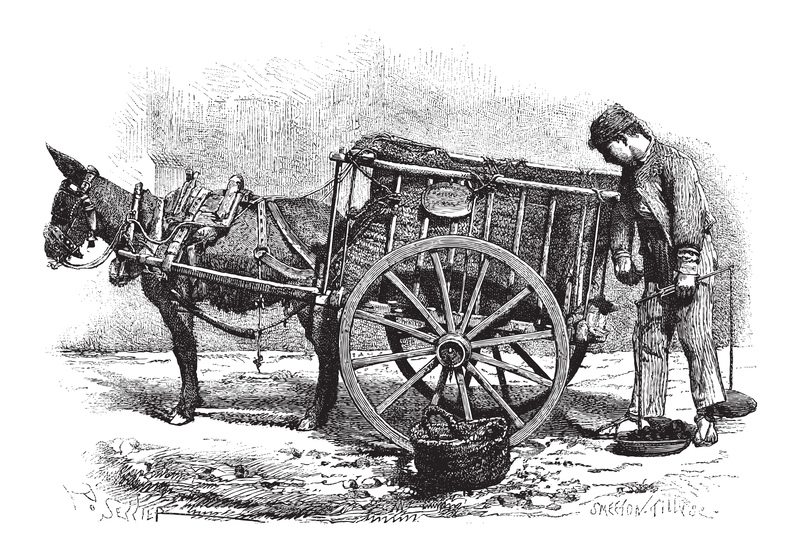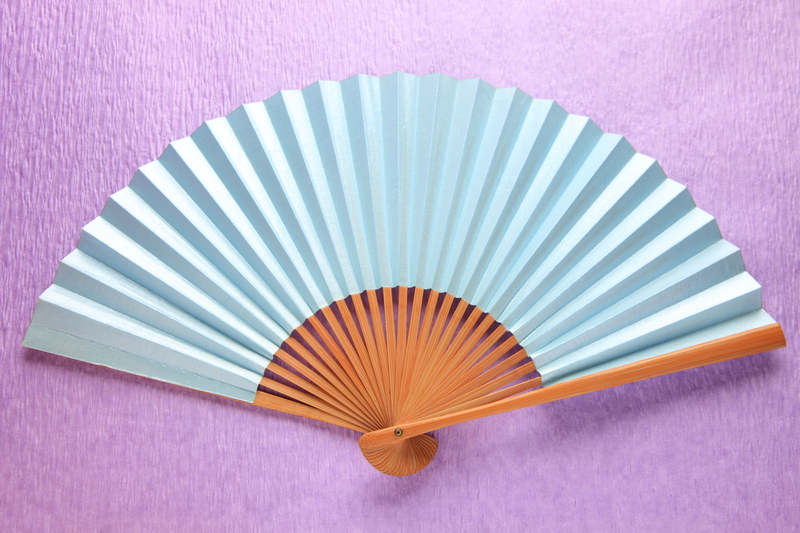Rethink How You Dispose of Plant Pots: Sustainable Solutions for Gardeners
In the gardening world, plant pots are essential. But have you ever wondered what happens to your used pots after you've repotted a plant or decoration? Rethinking how you dispose of plant pots is an important step towards sustainability. Each year, millions of pots--plastic, terracotta, and ceramic--end up in landfills. This poses environmental challenges and wastes valuable resources. Let's explore the best practices, innovative solutions, and creative ideas for handling plant pots responsibly.
Why Rethink the Disposal of Plant Pots?
Traditional ways of discarding plant pots are no longer sustainable. From plastic waste filling our landfills to the energy spent in manufacturing new pots, every step has a carbon footprint. Disposing of plant pots differently can significantly reduce your environmental impact and even open up new opportunities for creativity in your home and garden.
- Environmental Impact: Plant pots, especially plastic ones, can take hundreds of years to decompose.
- Resource Waste: Discarded pots represent wasted materials that could be reused or recycled.
- Community Benefit: Proper plant pot disposal can support local gardening initiatives and nonprofits.

Types of Plant Pots and Their Disposal Challenges
It's essential to consider the different types of plant pots before deciding how to dispose of them. Eco-friendly plant pot disposal varies depending on the material.
1. Plastic Plant Pots
Plastic pots are lightweight, durable, and affordable, but they pose significant disposal problems. Not all types of plastics are accepted at recycling centers, and those that are may need to be cleaned thoroughly to be recycled effectively.
2. Terracotta and Clay Pots
Terracotta and clay pots are popular for their natural look and breathability. However, they break easily and, while they're made from natural materials, they're not always accepted in municipal recycling programs.
3. Ceramic Pots
Ceramic pots come in many shapes and colors and are often glazed. The glazing makes them difficult to recycle, and broken ceramics can't simply be placed in most home recycling bins.
4. Biodegradable and Peat Pots
Biodegradable pots are the easiest to dispose of responsibly. These break down naturally in the soil as your plants grow, making them ideal for eco-conscious gardeners.
Better Ways to Get Rid of Plant Pots
Don't just throw your plant pots in the trash! Here are some smart alternatives for disposing of plant pots and putting them to better use.
1. Reuse and Repurpose
- Continuous Gardening: Clean old pots thoroughly and use them for new plants. Larger containers can be especially valuable for repotting or for starting seedlings.
- Creative Projects: Turn plant pots into art projects--paint, decorate, or stack them for backyard sculptures.
- Organizers: Use small pots to organize garden tools, seeds, or even household items such as pens or makeup brushes.
- Storage: Store compost, fertilizers, or garden accessories in larger containers.
2. Donate to Local Schools, Nurseries, or Community Gardens
- Schools: Many school gardening programs need pots for growing experiments and projects.
- Community Gardens: These groups often depend on donated materials to maintain their gardens and support local food initiatives.
- Nonprofits and Plant Swaps: Search for local charities or plant swap events where pots are always in high demand.
3. Return-to-Retailer Recycling Schemes
Many garden centers and nurseries now offer plant pot recycling drop-off programs:
- Check with your local garden center for collection bins.
- Some major retailers partner with recycling companies to ensure pots are processed properly.
- Before dropping off, make sure pots are clean and free from soil or plant debris.
4. Repurpose for DIY Home Decor
Don't be afraid to get crafty! Old plant pots can serve many decorative purposes inside your home:
- Candle Holders: Small terracotta pots are perfect for homemade candles.
- Vases or Pencil Holders: Large or uniquely shaped pots make great vases or desk organizers.
- Holiday Decorations: Paint and assemble pots into Christmas trees, snowmen, or festive centerpieces.
5. Use Broken Pots in the Garden
- Drainage: Break terracotta pots into pieces and add them to the bottom of new planters for improved drainage.
- Mosaic Projects: Glue fragments onto garden tables, stepping stones, or picture frames for unique art.
- Plant Markers: Write plant names on pot shards and stake them in the ground.
6. Compost Biodegradable Pots
If you use biodegradable pots, simply plant them directly into the ground or add them to your compost bin. They will decompose naturally, enriching your soil.
Why Plastic Plant Pots Are a Special Case
Plastic plant pots present the most significant challenge when it comes to sustainable plant pot disposal. Here are some tips to make the most of them:
- Only a small number of recycling facilities accept horticultural plastics.
- Check for the recycling code--pots marked with codes #2 (HDPE) or #5 (PP) are more likely to be accepted.
- Always wash the pots before recycling; leftover soil or fertilizer contaminates the recycling process.
- Consider buying pots made from recycled or biodegradable materials whenever possible.
Reduce your demand for new plastic pots by seeking out alternatives such as coir, rice husk, or bamboo fiber pots, which are increasingly available in garden centers.
Innovative Businesses and Circular Solutions
Several organizations are now tackling the issue of plant pot waste in the horticultural industry. Look for:
- Brands that use recycled materials for new pots.
- Companies offering take-back programs for old pots.
- Startups transforming waste plant pots into new consumer products--like fencing, furniture, or even more pots.
Support these businesses by purchasing their products or returning your used pots for recycling.
What NOT to Do with Old Plant Pots
While finding ways to reuse or recycle plant pots is important, be cautious with the following actions:
- Never burn plastic pots: This releases toxic fumes dangerous to people, pets, and the environment.
- Avoid landfill disposal: Whenever possible, avoid sending plant pots to general waste collection, as they won't break down and will persist for centuries.
- Don't reuse diseased pots: If a pot previously housed a diseased plant, sterilize it thoroughly before reuse. Otherwise, dispose of it safely to avoid spreading pests.
How to Prepare Plant Pots for Recycling or Reuse
- Remove any remaining soil or plant material.
- Rinse pots thoroughly with water. For plastic pots, a mild bleach solution can prevent the spread of plant diseases.
- Dry pots completely before storing, donating, or dropping off for recycling.
- Separate by material type: Plastics, terracotta, and ceramics should be sorted for efficient recycling.
Best Alternatives: Choose Sustainable Pots Next Time
An important aspect of sustainable plant pot disposal is thinking ahead--choose eco-friendly pots at the time of purchase:
- Biodegradable and Compostable Pots: These break down in your garden, leaving no waste behind.
- Recycled Plastic Pots: These promote a circular economy and reduce demand for virgin plastics.
- Coir or Bamboo Fiber Pots: Made from sustainable plant materials and compostable at end-of-life.
When you do need to buy new pots, look for options labeled as 'Curbside Recyclable' or 'Made from Recycled Materials'.
Common Myths About Plant Pot Disposal
Myth 1: All Plastic Pots Are Recyclable
Fact: Only certain plastics are accepted by recycling programs. Check local guidelines before dropping off your pots.
Myth 2: Broken Pots Belong in the Trash
Fact: Broken terracotta and ceramic can be reused creatively in your garden or home. Only dispose of these in the landfill as a last resort.
Myth 3: Reusing Old Pots Is Unsafe
Fact: As long as pots are cleaned thoroughly, they are perfectly safe for reuse.

Conclusion: Every Small Action Makes a Difference
It's time to rethink how you dispose of plant pots. By choosing sustainable alternatives, reusing creatively, and participating in recycling programs, you help reduce waste and support a healthier planet. Whether you're an avid gardener or simply have a few houseplants, the way you handle your old pots matters.
- Reuse whenever possible--get creative and find new purposes for your pots.
- Donate to schools, communities, or nonprofits that need gardening supplies.
- Participate in plant pot recycling through local retailers or recycling centers.
- Select biodegradable or recycled-material pots for future purchases.
By making responsible choices in plant pot disposal, you're contributing to a more sustainable gardening future. Start today--your garden and the planet will thank you!
Frequently Asked Questions About Disposing of Plant Pots
Can all plant pots be recycled?
Not all pots are recyclable. Check the recycling number on plastic pots and consult your local facility for their guidelines. Terracotta and ceramic pots are generally not recyclable in standard curbside bins.
What should I do with cracked or broken plant pots?
Repurpose the shards for drainage, garden art, or stepping stones. Only discard truly unusable pieces as a last resort.
Where can I donate unwanted plant pots?
Local schools, community gardens, and some garden centers accept donations. Check neighborhood gardening groups for plant swaps, too.
How do I sanitize used plant pots?
Wash pots with warm soapy water, then soak in a 10% bleach solution for 10 minutes. Rinse and dry thoroughly before reuse.
Take action today and rethink how you dispose of plant pots for a thriving, eco-friendly garden.